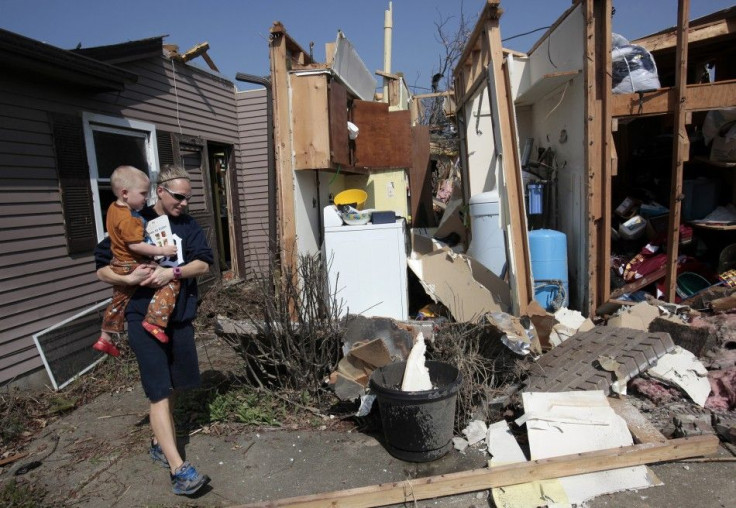Tornado Frequency In 2012: Global Warming, Climate Change To Blame?

On Monday night, a tornado touched down southwest of St. Antonio, Texas. The day before that, two twisters hit near North Platte, Neb. Last week, homes were destroyed in Michigan; the week before that, tornadoes hit areas of Alabama, Indiana and Kentucky.
Is this a repeat of last year, which saw the most tornado-related deaths ever recorded? Casualties reached 550 in 2011, according to the U.S Storm Prediction Center (SPC). This year, tornado season is only just beginning and we've already seen at least 55 deaths. Historically, the average number of tornado casualties during a full year is just 60.
Tornado season varies by area, and tornadoes can happen at any time. But by all accounts, the tornadoes of 2012 have hit the United States much earlier than usual. There is no question that these are meteorologically turbulent times.
On the other hand, it is much too soon to call this a trend. As recently as 2010, twister occurrences were at a definite low point. And 2009 wasn't bad either. All in all, the last few years haven't been remarkable in terms of tornado frequency, making 2011 and 2012 more of a fluke than a pattern.
Still, the hundreds of fatalities in recent years have got people thinking. Some wonder whether human activities could be behind the weather patterns that lead to destructive tornadoes.
Does global warming lead to an increase in deadly twisters?
No, says the SPC in a statement on the FAQ section of their website. Thunderstorms do. The harder question may be, 'Will climate change influence tornado occurrence?' The best answer is: We don't know. They go on to explain that since tornadoes are so small and quick, it's hard to make broad assumptions about what causes their frequency.
There are disagreements among researchers. Weather is complicated; warmer global temperatures can lead to a myriad of consequences. As Reuters explained, The scientific challenge is this: the two conditions necessary to spawn a twister are expected to be affected in opposite ways. A warmer climate will likely boost the intensity of thunderstorms but could dampen wind shear, the increase of wind speed at higher altitudes.
The million dollar question: will the increase in thunderstorms cause more tornadoes, or will the decrease in wind shear cancel that out, leading to less twisters?
Research conducted in 2007 pointed to an increase in thunderstorms canceling out the decrease in wind shear. The study: Changes in severe thunderstorm environment frequency during the 21st century caused by anthropogenically enhanced global radiative forcing.
Study authors determined that an increase in thunderstorms, which lead to tornadoes, will more than compensate for the relative decreases in shear. That means that the environment would still be considered favorable for severe convection.
Going forward, we may see less tornadoes overall -- but of those, a higher percentage will be severe, damaging and potentially fatal. This may explain the drastic rise in fatalities over the last couple years.
© Copyright IBTimes 2024. All rights reserved.






















